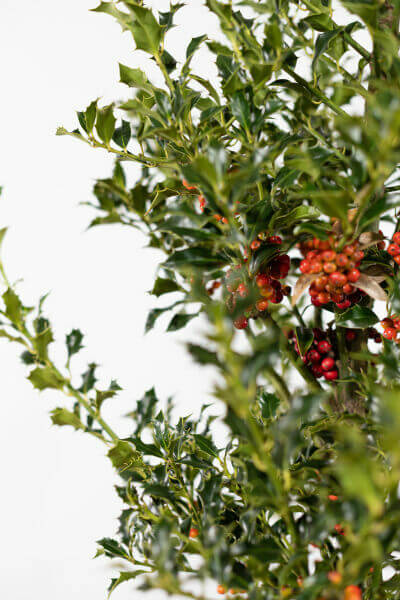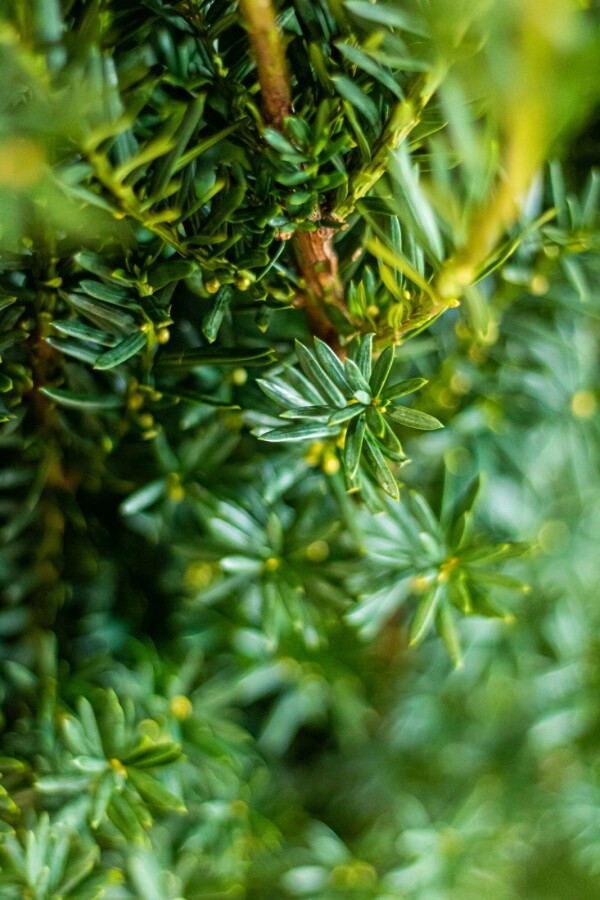Best Hedging Plants For Spring Flowers
Boost your garden's allure with lavish hedge ranges such as Yew (Taxus), Thuja, Laurel, Photinia, and Bamboo, celebrated for their structural integrity and ecological advantages.
Yew and Thuja supply evergreen protection and winter resilience, while Laurel offers fast development and broad, aromatic leaves.
Photinia adds seasonal appeal with its lively red foliage, and Bamboo lends a low-maintenance, peaceful ambiance.
These hedges enhance air quality, decrease sound, and create tranquil, private areas.
Correct planting, spacing, and maintenance guarantee energetic growth and environmental consistency.
Explore how these rich ranges can raise your garden's appeal and well-being.
Secret Takeaways
Transform Your Garden With Lush Hedge Varieties
- Select Yew for its thick, evergreen development and exceptional durability.
- Opt for Laurel for its fast growth and broad leaves, making sure fast privacy.
- Choose Photinia for its vibrant seasonal foliage, which turns a striking dark red.
- Make use of Bamboo for a low-maintenance, winter-hardy hedge with visual appeal.
- Space plants 2-3 per meter and prune regularly for optimum growth and health.
Popular Hedge Plants
When changing a garden with rich hedge varieties, it's important to think about popular hedge plants such as Yew, Thuja, Laurel, and Photinia due to their distinct attributes and advantages.
Yew (Taxus) is extremely respected for its longevity and dense, green growth, making it a prime choice for enduring landscapes.
Thuja is noted for its evergreen foliage and robust winter strength.
Photinia adds seasonal vibrancy with red leaves that darken in time, developing vibrant visual appeal.
Laurel provides fast growth and fragrant, broad leaves, ideal for fast personal privacy.
Furthermore, Bamboo is an exceptional choice for atmosphere, offering a low-maintenance, winter-hardy alternative that boosts the garden's visual with its elegant, swaying canes.
These choices accommodate a range of horticultural needs and preferences.
Advantages of Garden Hedges
Garden hedges provide a wide range of benefits, making them an important addition to any landscape. These natural barriers are cost-efficient to execute and provide substantial wind protection, boosting air flow and adding to sound reduction. The thick foliage of hedges like Thuja and Beech guarantees privacy by obstructing visibility, creating a remote and serene environment.
Hedges likewise play an important function in microclimate regulation, supplying a stable environment that promotes plant development and reduces temperature level fluctuations. Their intricate leaf structures filter toxins, improving air quality and adding to a much healthier garden ecosystem.
Furthermore, hedges master noise reduction, soaking up and deflecting acoustic waves to lower ambient noise levels. This dual performance of supplying both visual and acoustic personal privacy boosts the overall serenity and visual appeal of any garden.
Planting and Upkeep Tips
For an effective hedge, meticulous preparation of the planting area is vital. Make sure the soil has proper pH and drainage to support strong root advancement.
Space the plants appropriately for the selected species. Water the hedge often throughout its preliminary development stage, changing as required with seasonal changes.
Implement a systematic pest control and disease prevention strategy, using organic or chemical treatments when necessary. Regularly inspect for aphids, termites, and fungal infections.
Apply mulch to maintain wetness and reduce weeds. Seasonal pruning promotes thick development and air flow, necessary for plant health.
Following these guidelines will assist you cultivate a dynamic, well-kept hedge that enhances the charm of your garden.
Spacing and Cutting Standards
Spacing and Cutting Standards
Appropriate spacing and trimming are essential for cultivating healthy, visually appealing hedges. Adequate spacing makes sure each plant gets adequate nutrients, light, and airflow.
Follow these standards for ideal hedge maintenance:
- Spacing: Position hedge plants 2-3 plants per meter to motivate robust growth.
- Pruning Techniques: Routine pruning is necessary for keeping preferred hedge height and shape. Trim new development in summertime and cut back older wood throughout winter.
- Seasonal Care: Adjust cutting schedules and approaches according to seasonal requirements to ensure plant health.
- Hedge Height: Frequently screen and cut to preserve the wanted hedge height and achieve uniform aesthetic appeals.
Adhering to these actions will ensure your hedge grows, boosting both the appeal and performance of your garden.
Selecting the Right Hedge
Choosing the Right Hedge
Selecting the proper hedge includes assessing factors such as fully grown height, foliage density, and ecological resilience. Effective hedge plant selection requires comprehending each species' development attributes and site-specific adaptability.
For instance, Yew (Taxus) provides excellent durability and dense development, while Thuja is noteworthy for its winter season durability. Additionally, thinking about maintenance requirements is important; fast-growing species like Laurel or Privet need regular cutting, whereas low-maintenance options like Bamboo or Ivy may be preferable for those looking for minimal maintenance.
Environmental elements such as soil type, light availability, and wetness conditions should also assist the selection procedure. This careful method makes sure the selected hedges will grow, offering both visual and functional benefits to the garden landscape.
Delivery and Planting Recommendations
To guarantee your hedge plants grow, they ought to be provided by specialized couriers and planted immediately upon arrival.
Follow these essential steps for effective planting:
- Soil Preparation: Improve the soil with organic matter to enhance drainage and nutrient content.
- Planting Depth: Produce a trench two times the width and equivalent to the depth of the root ball.
- Watering Techniques: Water completely after planting, keeping the soil consistently damp but not saturated.
- Mulching: Apply a layer of mulch to keep wetness and suppress weeds.
Client Assistance and Service
Offered the crucial role of timely support in horticultural pursuits, our customer support group is available six days a week through telephone, email, and social media to provide skilled advice and swiftly address any concerns. Their dedication to quick response times guarantees client fulfillment by fixing questions connected to plant health, optimum planting techniques, and upkeep schedules.

Email
This comprehensive support system, strengthened by an outstanding 9.3/ 10 client ranking, highlights our commitment to enhancing the gardening experience for every client.
Regularly Asked Concerns
The Length Of Time Does It Consider Hedge Plants to Develop?
Hedge plants generally need one to 3 years to end up being totally developed, with the specific period differing by types and growing conditions.
Efficient care throughout this critical duration is necessary for robust growth. Constant watering, watchful weed control, and appropriate fertilizer application are essential in promoting strong root advancement.
For example, fast-growing types like Laurel may develop faster, while slower-growing ranges such as Yew might take longer. Thorough maintenance speeds up the facility process, leading to healthy and dense hedges.
What Are the Finest Hedge Plants for Privacy?
The concern of the finest hedge plants for privacy includes examining evergreen and deciduous choices.
Evergreen hedges like Thuja, Laurel, and Cypress provide year-round coverage, guaranteeing constant personal privacy.
In contrast, deciduous hedges such as Beech offer seasonal privacy, shedding leaves in chillier months.
Secret upkeep pointers for personal privacy hedges consist of regular cutting, fertilizing in spring, and correct spacing-- normally 2 to 3 plants per meter.
Additionally, consistent watering and diligent weed removal are essential for promoting healthy, dense growth.
Can Hedge Plants Attract Wildlife to My Garden?
Yes, hedge plants can attract wildlife to your garden by providing important benefits like shelter, food, and nesting sites, thereby boosting regional biodiversity. For circumstances, yew, holly, and laurel are exceptional for drawing in birds, while ivy supports a variety of bugs.
However, it is essential to keep in mind that there are some downsides, such as increased upkeep to manage bugs and routine upkeep. Thoroughly choosing and preserving hedge ranges can help balance these advantages and disadvantages, eventually fostering a sustainable and dynamic ecosystem in your garden.
Exist Any Flowering Hedge Plants Available?
Yes, there are flowering hedge plants readily available that can improve the beauty of your garden.
For instance, Elaeagnus, also called Olive Willow, produces fragrant white flowers in the fall, including a touch of beauty.
Photinia, another popular option, showcases dynamic red leaves that grow into a rich green, developing a dynamic visual result throughout the seasons.
To guarantee these plants grow, it's important to practice correct pruning methods and seasonal maintenance, such as trimming brand-new growth in the summer season and cutting back in the winter season.
These steps will assist maintain the health and visual appeal of your blooming hedges.
How Do I Prevent Insects in My Hedge Plants?
To avoid pests in hedge plants, utilize natural bug control methods and preserve correct hedge care. Introduce beneficial bugs like ladybugs, which victimize damaging pests, to produce a well balanced environment.
Regularly examine your hedges for indications of problem and quickly remove any affected parts check here to avoid the spread. Ensure the health of your hedges by applying balanced fertilizers and offering appropriate water.
Make use of mulching to maintain soil wetness and proper spacing to reduce plant stress and promote robust growth. These practices collectively help in reducing insect problems and preserving a healthy hedge.
Conclusion
In essence, selecting the best hedge varieties such as Yew, Thuja, and Laurel can transform any garden into a peaceful haven. These plants provide year-round plant, boost visual appeal, and offer practical benefits like sound decrease and wind security.
Correct planting strategies, precise spacing, constant watering, and seasonal trimming are important for optimal development.
Dependable shipment services and skilled client support ensure a smooth experience from purchase to planting, making it easier than ever to elevate your outside space.
Garden hedges use a wide range of benefits, making them an important addition to any landscape. These natural barriers are economical to execute and provide substantial wind protection, boosting air flow and contributing to noise decrease. The dense foliage of hedges like Thuja and Beech makes sure privacy by blocking visibility, developing a secluded and tranquil environment.

Pruning Strategies: Routine pruning is necessary for keeping preferred hedge height and shape. Trim new growth in summer and cut back older wood throughout winter season.